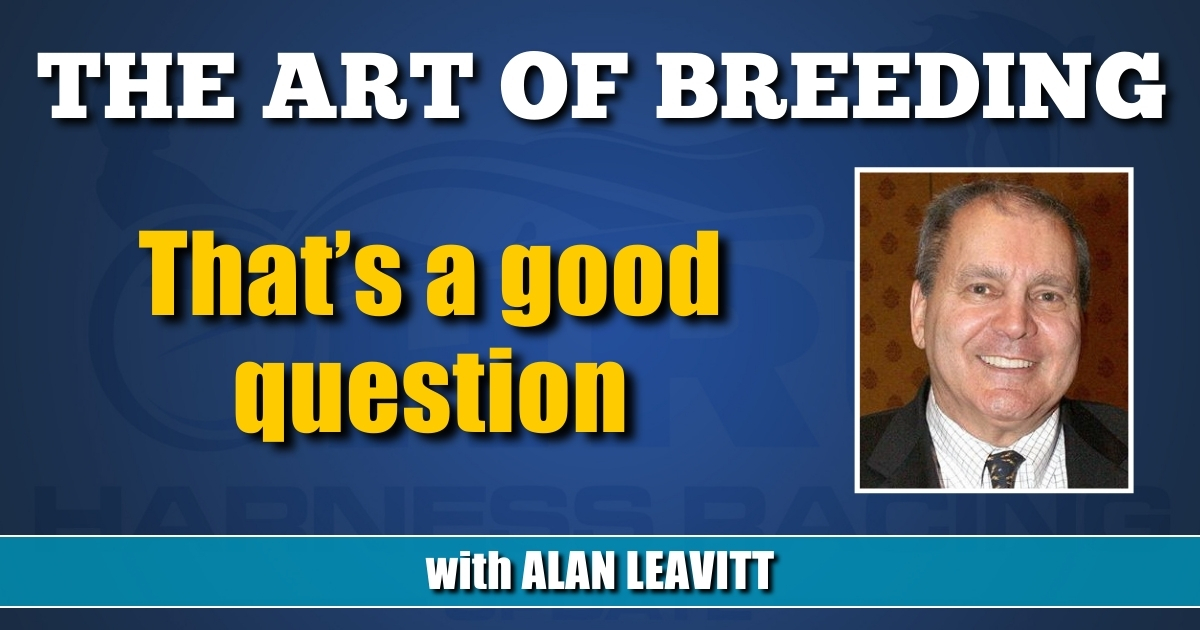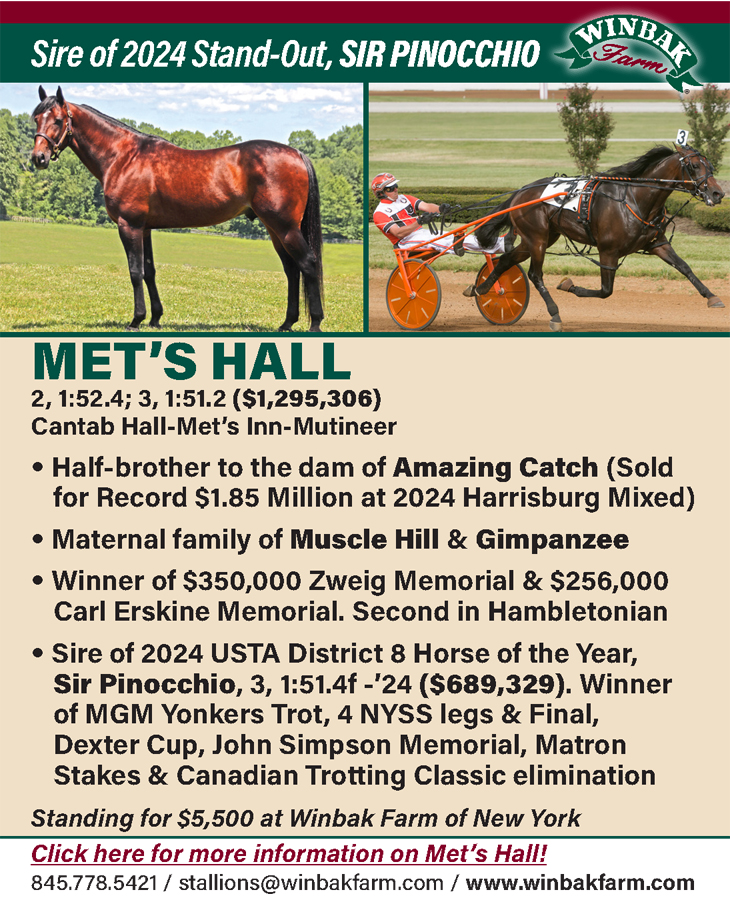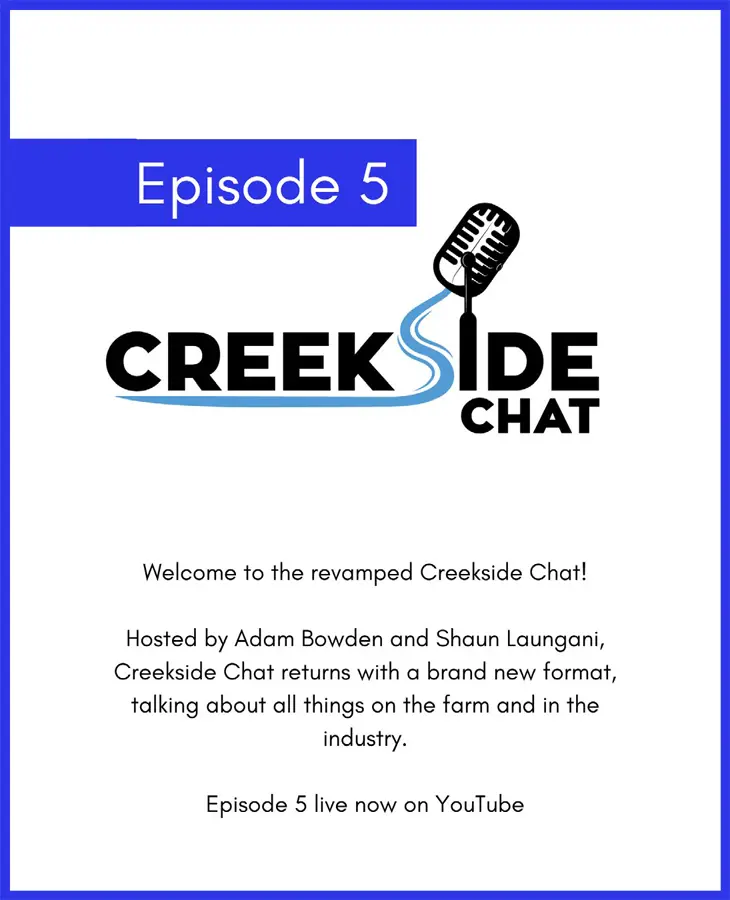
That’s a good question
by Alan Leavitt
Joel Kravet has asked me a question I’m happy to answer. Because the recipient mares carrying embryo transplants are generally quite placid, he wonders if that quietness could be passed on to the foal they’re carrying.
The answer is a resounding no. Both the phenotype, which is the visible horse, and the genotype, which is the invisible, genetic makeup, are fixed at the moment of conception. There is no way the recipient mare carrying an embryo transferred (ET) foal can have any effect on that foal, either physically or genetically. The one proviso here is that the recipient mare should be fed exactly the same as a naturally pregnant mare.
Ever since ETs were first introduced, foals produced by that method have gotten an undeserved bad rap. That particularly applies to yearlings. Every year a smart, informed buyer can get him or herself a bargain at the yearling sales when a nice, embryo transferred yearling walks into the sales ring.
There is another Old Wives Tale that needs to be laid to rest. Down through the years there has been a belief that an aggressive mare will produce an aggressive foal, ergo a better, gamer racehorse.
During the years we stood Valley Victory here at Walnut Hall, there were two breeding seasons when Moni Maker was bred to him and boarded here. Both years she was accompanied by her long time companion, also a standardbred mare, but about half Moni Maker’s size. Seeing them together in a big paddock, she looked like Moni Maker’s mascot.
But if you watched them closely, you’d quickly see that all the little mascot had to do was back one ear, and Moni Maker would flee to the other side of the paddock. At this time, this was the greatest money-winning mare of any racing breed, yet she was totally dominated by someone half her size.
This is also a good place to point out that horses, regardless of breed, should always be turned out in even numbers. Horses are buddy animals, and if there is an odd-numbered group, one of them is going to be a lonely only, always at the bottom of the pecking order.
On the subject of embryo transfers, they are something to consider as the breeding season winds down. Despite the fact that some breeders don’t even start breeding their mare until March 15, there is always a sales premium on bigger, better developed yearlings, and the earlier they’re foaled, the bigger they’ll be at sales time.
So when you have a good mare, and she’s still open in June, an embryo transfer isn’t the worst idea in the world. That way you still are getting a foal from the mare, but you’re starting the next breeding season with an open mare whom you can put on an early breeding cycle. Again, you do have the unreasonable bias against an ET yearling, but one can always hope that reason will finally prevail here.
A related issue to June breedings can be whether or not to breed on a mare’s foal heat. As I’ve said, we here at Walnut Hall are blessed to have one of the great reproductive vets in Dr. Karen Wolfsdorf. But when she will very occasionally check a mare more than 10 days after foaling and she has a 40 follicle, with no bruising, the question about whether to breed her arises. My answer after a lifetime spent breeding horses, is not to breed her.
Statistically, the odds are much worse for both getting a pregnancy and carrying it to term when you breed on a foal heat. It’s very tempting, late in the season, but you’re still better off to pass her foal heat and short cycle her.
Finally, another rite of summer has started, i.e. the baby races. Over the early years, this kid made it a rule of thumb that the eventual top 2-year-old of the year didn’t appear on the track until after the fourth of July.
I haven’t followed things closely enough to know if that’s still true. But there is a new, first year sire, that could change the trotting sire equation. That’s Walner, a horse I’ve touted to everyone who’d listen. I hasten to say I don’t own a hair in his tail, so there’s no self-interest involved here.
While I’m mentioning stallions, some smart farm operator is going to land another horse with great potential in Captain Corey. He showed enough at 2 to meet my criterion there, and he’s blessed with a pedigree that leaves him wide open for all the fashionably-bred fillies now racing. Again, a purely objective opinion. But if and when he becomes the sire this kid thinks he can be, you heard it here first.
N.B.
I welcome questions and comments on any subjects you find of interest.
Email me at: [email protected].












